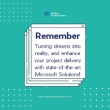You’re constantly bombarded with emails, meetings, and urgent tasks, making it a challenge to stay on top of your workload. However, by implementing strategic time management hacks, you can reclaim control over your schedule and focus on high-impact activities.
From prioritizing tasks using the 80-20 rule to delegating effectively and time blocking, there are various techniques you can use to work smarter, not harder. But what specific strategies will truly transform your productivity and efficiency?
Let’s explore how adopting the right time management techniques can help you achieve your goals.
Prioritizing Tasks Effectively
As a busy executive, you’re constantly juggling multiple responsibilities and competing demands on your time. Effective prioritization is essential to guarantee you’re focusing on the most important tasks that drive your goals and success.
To do this, you need to distinguish between urgent and less essential items, setting clear priorities based on their impact and deadlines. Start by categorizing tasks into high, medium, and low priority. High-priority tasks are those that are vital to your goals and have significant consequences if not completed on time.
Allocate specific time blocks for these tasks, ensuring you dedicate uninterrupted time to focus on them. To enhance your prioritization, use the 80-20 rule, also known as the Pareto Principle, which suggests that approximately 80% of your outcomes come from 20% of your efforts.
Identify the tasks that fall within this 20% and prioritize them first. Additionally, involve your team or trusted colleagues in this process to gather insights and brainstorm strategies to optimize your time management.
Time Blocking for Productivity
Effective executives manage their time meticulously, and one of the most powerful tools in their arsenal is time blocking. This technique involves scheduling specific time slots for tasks, providing structure to your day and helping you stay focused on high-priority activities. By allocating fixed, uninterrupted time for each task, you can eliminate distractions, reduce procrastination, and boost productivity.
To implement time blocking effectively, start by categorizing your tasks into urgent and non-urgent categories. Then, schedule specific time blocks for each task, guaranteeing you leave some buffer time for unexpected interruptions.
For example, Elon Musk and Bill Gates are known to use time blocking to manage their busy schedules, allocating specific time slots for meetings, email communication, and personal tasks. This approach allows you to control your schedule, prevent chaos, and make the most of your time.
Delegation Techniques
You’ve mastered the art of time blocking, and now it’s time to amplify your productivity even further by harnessing the power of delegation. Effective delegation is vital for executives who want to maximize their productivity and efficiency. By delegating tasks, you not only save time but also develop the skills and abilities of your team members, helping them grow and perform better.
To delegate effectively, you need to identify tasks that can be handled by others and communicate clearly about expectations and deadlines. This involves trusting employees with important tasks and providing the necessary resources and support. Remember, delegation isn’t about offloading tasks but about empowering your team to take ownership of specific responsibilities.
Start by evaluating your tasks and identifying those that can be delegated. Then, allocate these tasks to the right team members, guaranteeing they’ve the necessary skills and resources.
Regularly review progress and provide feedback to guarantee tasks are completed efficiently. By delegating effectively, you’ll not only save time but also build a more capable and confident team. This, in turn, will help you focus on high-priority tasks and drive business success.
Creating a Daily Schedule
Crafting a daily schedule is an vital step in executive time management. By planning out your day meticulously, you manage your time more effectively and stay focused on your goals. Top executives recognize the importance of setting a daily plan to guarantee they maximize their productivity and efficiency.
To start, set aside time each evening or morning to map out your next day. This process helps you prioritize tasks and allocate specific time blocks for each activity, including meetings and personal tasks.
When creating your daily schedule, consider your long-term goals and break them down into manageable tasks. Prioritize these tasks based on urgency and importance, and allocate time slots accordingly.
To prevent overcommitting, it’s essential to maintain a balance and not overload your day with too many tasks. Incorporate breaks to prevent exhaustion and maintain productivity.
Managing Meetings Efficiently
Between back-to-back meetings and endless emails, your schedule can quickly become overwhelmed. Managing meetings efficiently is essential to maintaining productivity and avoiding burnout. To achieve this, you need to prioritize and streamline your meeting schedule.
Start by evaluating the necessity of each meeting. Ask yourself if attendance is absolutely required and what the consequences would be if you didn’t attend. Consider delegating duties or assigning someone else to lead the meeting in your place.
Efficient time management involves setting strict time limits for meetings and ensuring they stay on track. If meetings are necessary, schedule them with specific time blocks, allowing for focused discussion and minimizing distractions.
Adopting a structured approach, like time blocking, can help you manage meetings and other tasks effectively. This technique involves allocating specific time slots for meetings, email communication, and personal tasks, ensuring a clear path to tackle your to-dos efficiently.
Using Time Management Tools
In managing your schedule effectively, leveraging time management tools is essential. These tools help you stay organized, automate repetitive tasks, and maximize productivity. For executives, who often juggle multiple responsibilities and meetings, time management tools can be a lifesaver.
One of the most effective time management tools is a calendar audit. This involves reviewing your schedule to identify unnecessary meetings, tasks, and commitments that can be delegated or eliminated. By doing so, you can free up time for more important tasks and activities that align with your goals.
Digital tools, such as to-do lists and time tracking apps, can also help you manage your time more efficiently. These tools allow you to prioritize tasks, set deadlines, and monitor your progress.
Additionally, they can help you identify time-wasting habits and optimize your schedule for better productivity. By incorporating time management tools into your daily routine, you can work smarter, not harder, and achieve your goals more effectively.
Effective use of these tools can greatly enhance your productivity and efficiency, making you a more effective executive.
Setting Realistic Goals
Setting realistic goals is the next step in maximizing your productivity as an executive. You need to define what you want to achieve and set targets that are challenging yet achievable. This involves breaking down long-term objectives into smaller, manageable tasks that align with your daily and weekly plans.
To set realistic goals, you must assess your current workload and capabilities. Consider your priorities, resources, and potential obstacles. It’s also essential to involve your team in this process to gain their insights and inputs, ensuring everyone is aligned with the goals and understands their roles in achieving them.
Effective goal setting helps you stay focused and prevents overcommitment, a common issue for executives that can lead to burnout. By having clear, achievable objectives, you can better allocate your time and resources, leading to higher productivity and success.
Regularly reviewing and adjusting your goals will also help you stay on track and make necessary adjustments to maintain peak performance.
Avoiding Multitasking
To maximize your productivity as an executive, it’s important to adopt strategies that avoid multitasking, a common pitfall that can greatly reduce efficiency and increase stress.
Research consistently shows that multitasking disperses your attention and energy across various tasks, resulting in decreased efficiency and a higher likelihood of errors. This is because your brain is designed to focus on one task at a time. By trying to handle multiple tasks simultaneously, you’re overloading your cognitive abilities and impairing your performance.
Embracing a single-tasking approach is fundamental for elevating productivity and sharpening focus. Prioritize your to-do list and tackle tasks one at a time, affording each your undivided attention before moving on.
This method guarantees that your most significant tasks receive the focus they merit. In addition, single-tasking reduces stress levels by simplifying your workload and allowing you to manage your time more effectively.
Contingency Planning
Across the landscape of executive responsibilities, unexpected disruptions can derail even the most meticulously planned schedules. This is where contingency planning comes in—helping you manage your time and stay on track despite unforeseen events.
CEOs and executives often use contingency planning as a crucial productivity hack. It involves creating a structured plan to handle unexpected interruptions and adjustments. This approach helps you maintain focus and control over your schedule by anticipating potential setbacks and preparing alternative strategies.
To implement contingency planning effectively, you need to identify potential risks, prioritize tasks based on urgency and importance, and allocate buffer times in your schedule. Regularly reviewing and updating your contingency plan helps guarantee that you’re prepared for any unexpected events that may arise.
By incorporating contingency planning into your time management strategy, you can enhance your resilience and efficiency, ultimately guaranteeing that you meet your objectives despite unexpected challenges.
This proactive approach helps you stay adaptable and maintain productivity even when faced with unexpected disruptions. By planning for contingencies, you can minimize stress and maximize your ability to manage your time effectively.
Continuous Performance Improvement
In the domain of executive responsibilities, continuous performance improvement isn’t a one-time fix but an ongoing process that demands constant attention and refinement. As an executive, you’re tasked with managing multiple priorities and guaranteeing that your team’s performance aligns with your company’s objectives.
To achieve this, it’s essential to implement strategies that foster continuous improvement. Regularly evaluating your time management techniques and making necessary adjustments can greatly enhance your productivity and that of your team. This involves reviewing your current workflow, identifying inefficiencies, and adopting new methods to streamline processes.
Effective executives prioritize tasks, delegate when possible, and leverage tools and technology to optimize their schedules. By focusing on continuous performance improvement, you can maintain a competitive edge and drive your organization’s success.
Embracing this mindset guarantees that you stay adaptable and responsive to changing circumstances, making informed decisions that propel your team and company forward.
Conclusion
Implementing effective time management strategies is essential for executives to work smarter, not harder. By prioritizing tasks using the 80-20 rule, employing time blocking, and delegating tasks, you can enhance productivity and focus on high-impact activities. Regular calendar audits, efficient meeting management, and contingency planning further optimize your schedule, helping you adapt to unexpected disruptions. By leveraging these strategies, you’ll foster a more efficient and empowered team environment, ultimately driving success.























